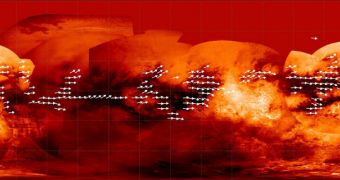Given the host of conditions on the Saturnine moon Titan, experts are convinced that the space body is one of the primary candidates for discovering alien life elsewhere other than Earth.
There are of course other moons in the solar system that can be classified as potentially habitable, such as for example Enceladus, orbiting Saturn and Europa, in orbit around Jupiter. But these bodies are all covered in ice, whereas Titan is not.
Back in 1908, Spanish astronomer José Comas y Solá provided the first hints on the “special” nature of this body, which was the first ever found to have an atmosphere. More than a century ago, this had never been heard of before.
Its atmosphere contains clouds, winds, and chemical mixtures that apparently can sustain organic molecules needed to form life. In fact, it has been recently proven that life could theoretically develop on Titan without the need of external influences.
All this happens on a moon where average temperatures near minus 180 degrees Celsius. Ice is harder than granite at those temperatures, but lakes of liquid hydrocarbons such as methane and ethane exist at Titan's poles.
Many experts consider the Saturnine moon a model of the early Earth, where life did not exist, but where the necessary conditions were present. Lakes, lightning, shorelines, a thick nitrogen atmosphere and seasons are among the things that our planet shares in common with the distant world.
Others believe that temperatures on its surface may be too low to allow for the building blocks of life to assemble into more complex structures, but say that subterranean microbial life could definitely exist.
“You have all these things that are analogous to Earth,” explains the Louis Block Professor in Geophysical Sciences at the University of Chicago, Ray Pierrehumbert.
“At the same time, it's foreign and unfamiliar. One of the things that attracts me about Titan is that it has a lot of the same circulation features as Earth, but done with completely different substances that work at different temperatures,” he adds.
“The ironic thing on Titan is that although it's much colder than Earth, it actually acts like a super-hot Earth rather than a snowball Earth, because at Titan temperatures, methane is more volatile than water vapor is at Earth temperatures,” the expert goes on to say.
The NASA Cassini orbiter is now keeping a close eye on this world, and images its surface during every flyby it carries out. With time, the spacecraft will paint a clearer image of the Saturnine moon, and might even help us establish whether life there is indeed possible, Daily Galaxy reports.

 14 DAY TRIAL //
14 DAY TRIAL //